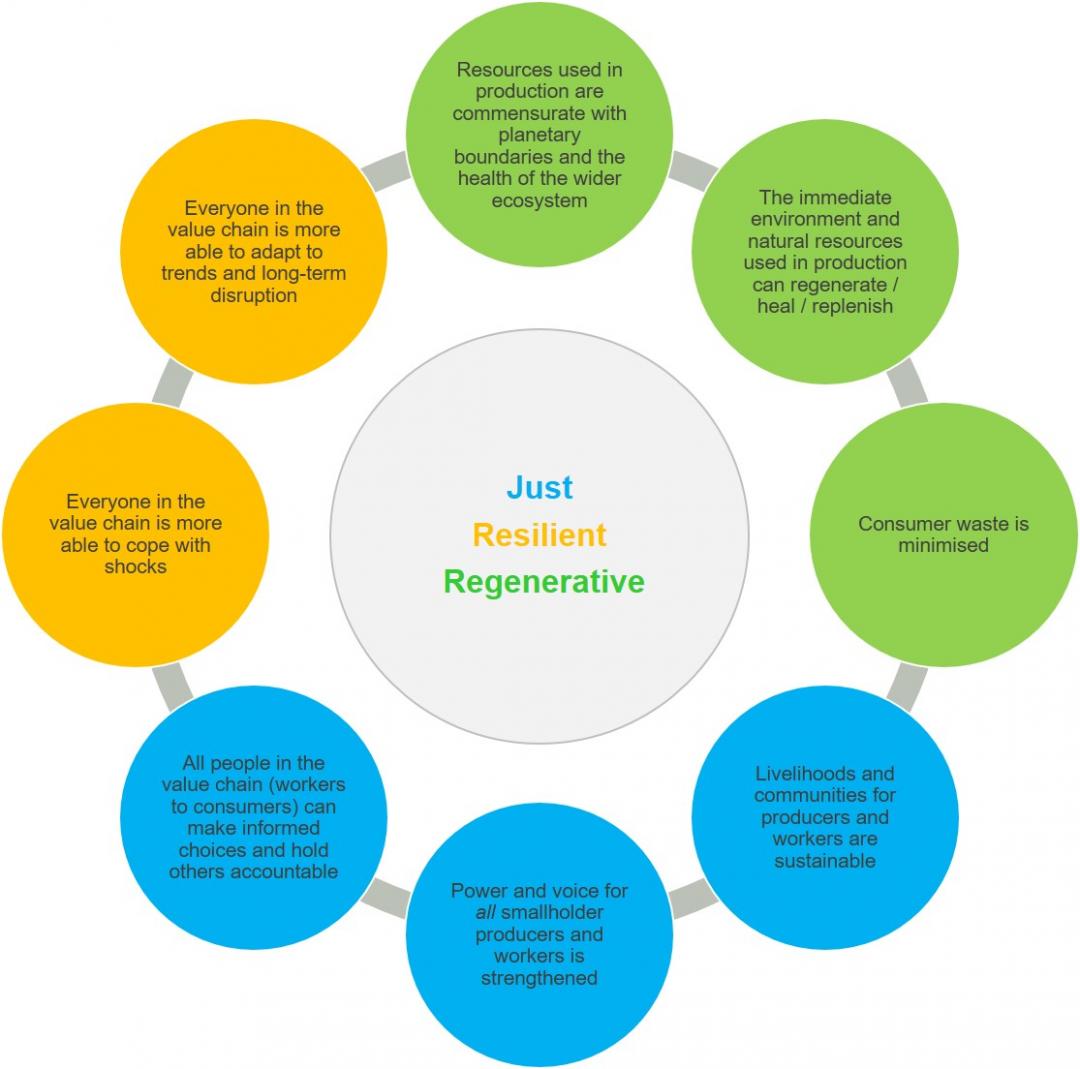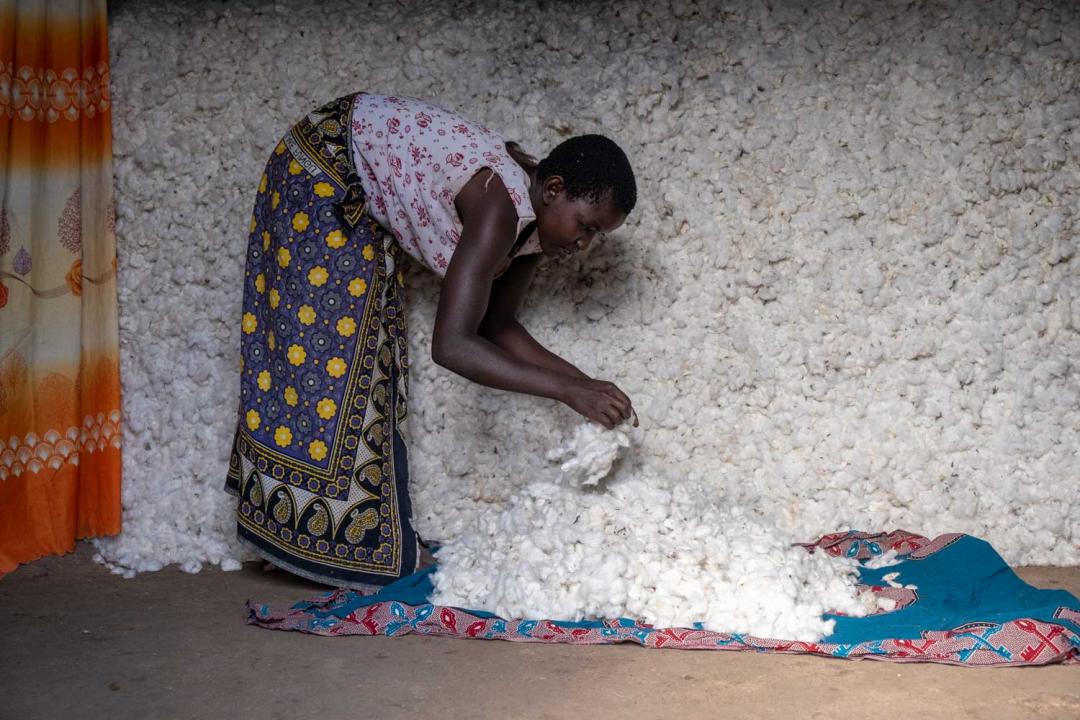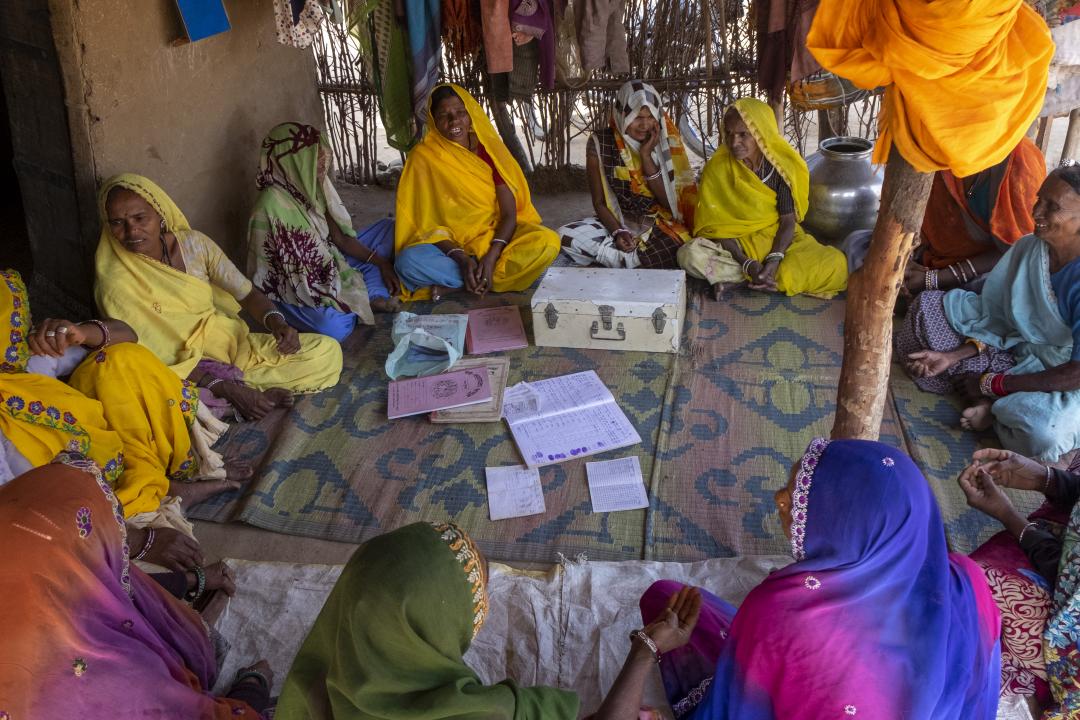Identifying transformative business models for the future of cotton
Do you think levels of ambition are rising in terms of sustainability commitments from major multinational companies?
We do see new levels of rising ambition across many major brands, including many of the companies we partner with. For example, Unilever has committed to Net Zero emissions from all its products by 2039 and a deforestation-free supply chain by 2023. We’re seeing increasing numbers of companies make commitments to sourcing 100% sustainable raw materials, particularly cotton, including various partners in the Cotton 2040 initiative; and over 82 companies have now joined our partners at the 2025 Sustainable Cotton Challenge, committing to sourcing 100 per cent sustainable cotton by 2025. But sustainably sourced materials are still not the norm: cotton produced according to sustainable standards currently accounts for 30 per cent of global production, but uptake of more sustainable cotton remains relatively low; only 25 per cent of sustainable production is purchased as such, leaving 75 per cent of sustainably produced cotton being traded as conventional. So in cotton, there’s a great deal more work to be done to make sustainable sourcing mainstream.
As we know, individual commitments can only take us so far. To reach the level of change that the scale of the climate and biodiversity crises call for, many of the key systems we rely on need radical overhaul and redesign. As a result, more and more coalitions and collaborations are stepping up, to help players across an industry work together on common challenges and goals that none of them can shift through their own actions and commitments alone. Forum for the Future convenes various such collaborations, focusing on systems change in cotton, textile circularity, protein, regenerative agriculture and renewable energy, to name a few. Another inspiring example is The Fashion Pact, in which 200 companies in the fashion industry came together to work on common goals of stopping global warming, restoring biodiversity and protecting the oceans.
2025 is only a few years away. Is the goal of sourcing 100% sustainable cotton by then attainable in your view?
For every company, it depends on where they are on their responsible sourcing journey. What’s really interesting is that the first companies to embark on the pathway to sustainable cotton (Marks and Spencer, C&A, H&M, IKEA and others) had a long learning curve as pioneers. Some of the companies that have signed that commitment more recently have been able to move really quickly once they made the decision. Part of the work we’ve done with Cotton 2040 is to demystify the process through the CottonUP Guide, which we launched in June 2018. Available in English, German and Japanese, the Guide provides an overview of the importance and options for sustainable cotton for sourcing professionals and sustainability managers and is really designed to provide a shortcut, enabling the rest of the sector to go further, faster.

What makes Cotton 2040 unique? How is it different from previous sustainable cotton initiatives?
Cotton 2040 is a multi-stakeholder initiative to facilitate the shift to a sustainable global cotton industry which is resilient in a changing climate; which uses business models that support sustainable production and livelihoods; and where sustainably produced cotton is the norm. A unique feature of Cotton 2040 is that it is futures-led. The diagnosis of what areas needed a collaborative approach was developed through a futures exercise exploring what the cotton industry could look like in 2040 – and we worked backwards from then to identify what needed to be done.
Cotton 2040 is the first initiative to bring together the full range of sustainable cotton standards and programmes, as well as brands, retailers and actors across the industry to work together on issues that are critical to cotton’s future and viability. In doing so, it aims to create additionality rather than adding yet another initiative to an already fragmented field. In addition to our work to increase uptake of sustainable cotton, we’re addressing the need for informed and aligned action on climate change adaptation, and for new, equitable business models. We have also worked with the cotton standards towards greater traceability and alignment around impact metrics. The latest phase of this work, in collaboration with the Delta Project, resulted in agreement on a common core set of metrics. This will make it much easier to track and demonstrate the benefits of sustainable cotton across the standards.
How do you identify and scale sustainable and inclusive business models as part of the initiative?
Working with our partners at the World Resources Institute (WRI), we conducted research and interviews with stakeholders across the cotton industry to identify the core characteristics of a just, regenerative and resilient supply chain. We then sense-checked these characteristics with our working group (consisting of standards, brands, NGOs, traders, industry bodies and others), allowing us to create a starting set of eight criteria for defining a sustainable business model.
Next, we carried out research to find examples of business models, in cotton or other commodities, which met one or more of those criteria. So far we’ve gathered over 70 examples, ranging from farming cooperatives or long-term contracting, to models that structure relationships in very different ways to significantly disrupt the conventional supply chain and distribute value differently. We’re now hunting for those truly transformational business models that can enable a just and regenerative cotton industry in the future - particularly as the impacts of climate change hit harder, putting even more strain on the most vulnerable, such as producers.

How did results vary geographically?
We consulted with stakeholders across the cotton system in different geographies, from India to Africa and the US, to find out where change is most needed in the value chain. While all had common themes, there were some notable differences. In India, the emphasis was on models providing more secure incomes and financing for smallholder farmers. In the US, the focus was on models that incentivise the provision of ecosystem services. The next step will be to look at the models we’ve identified in our research to select a few where we see the greatest potential for positive disruption and transformation – and then help them to scale in cotton. We are also looking to identify priority areas for business model innovation.
What role does the customer play in pushing companies to examine their supply chains and transform their business models?
Customers can be a major driver of change. For example, as social media and initiatives like Fashion Revolution increase their awareness of situations of suffering and hardship, or even forced labour in the value chains of the clothes they wear, consumers are putting more pressure on brands to take bolder action. ESG investors, too, are paying much closer attention to the sustainability of the raw materials that a company they might invest in is using.
At the same time, technologies are emerging that allow products and raw materials to be tracked from farm to shop floor. For example, in a recent collaborative initiative, The Organic Cotton Traceability Pilot combined on-product markers and blockchain technology to track organic cotton from farm to consumer; a first in the apparel industry. This means that, in future, it will be more common for customers to be able to know, and trust, where the cotton in a garment they’re considering purchasing came from - which is a huge step forward, especially given the increased media focus on alleged human rights violations in the Chinese province of Xinjiang.

How do large companies provide opportunities for smaller inclusive businesses operating along the value chain, for example with smallholder farmers?
Larger companies can provide resources, training, access to markets and other services which can enable small businesses, like smallholder farmers, to thrive. For example, as part of Primark’s Sustainable Cotton Programme —probably the largest independent programme managed by a fashion retailer — it can trace the source of its sustainable cotton at every stage of the process, right down to the community it was grown in. As part of that, Primark are committed to working with CottonConnect and local implementing partners to train and educate 160,000 cotton farmers on more environmentally friendly farming practices by 2022. Companies with ambitious sustainable sourcing policies that prioritise environmental as well as social resilience can create huge improvements for farmers and workers in their supply chains.
Ultimately, though, the unequal distribution of value in supply chains that drive poverty in smallholder farming communities can’t just be resolved through individual programmes. We need new business models to become mainstream that build in equity and share risk more fairly across the value chain.
In sum, what particular value do platforms and new coalitions add in reimagining sustainable business?
We often quote the proverb “if you want to go fast, go alone; if you want to go far, go together.” Collaborative initiatives offer a platform for businesses to re-think together around what the future might hold, the changes that are needed, and how to prepare to be resilient in a world that’s changing rapidly, often with unpredictable outcomes. More importantly, by working together as partners, they have the collective muscle to power new innovations, and shift entrenched ways of working that move their industry forwards on a sustainable trajectory. To do collaborations well takes skill, commitment, time and effort. Without them, we have no chance of driving the deep transformation that is required if we are to create a just and regenerative future in which both people and planet can prosper.
